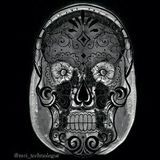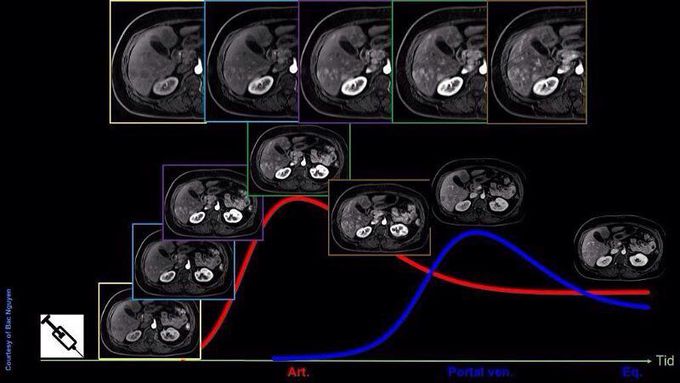


Liver imaging
Conventional liver DCE-T1w imaging requires one breath-hold (~15–20 s) for one phase, and in this case, the lesion enhancement pattern may be weakened or missed due to improper timing or the fast uptake and washout of the contrast agent in certain types of lesions. CAIPIRINHA-Dixon-TWIST (CDT) Volume-Interpolated Breath-Hold Examination (VIBE) is a new MR technique for fast Time-Resolved dynamic 3-Dimensional (3D) Imaging of the abdomen with high spatial resolution. The Controlled aliasing in parallel imaging results in higher acceleration (CAIPIRINHA) facilitates the use of higher acceleration factors allowing further reductions in image acquisition time to 10 seconds for abdominal MRI. The Dixon method is a robust technique, which is based on the difference of chemical shift between fat and water protons. Dixon fat separation techniques are virtually insensitive to B0 inhomogeneities, even at 3T, and can also be combined with VIBE sequences. The new generation of 3-T MR scanners can acquire these 2 echoes in less than 2.5 milliseconds so that the total acquisition time is not substantially affected. TWIST (Siemens)/ TRICKS (GE) allows significant acceleration of the acquisition, theoretically facilitating dynamic, first-pass contrast-enhanced imaging within a single breath hold. With these techniques, the central portion of k-space, which determines image contrast, is sampled more frequently than the k-space periphery. Both TWIST and TRICKS have been used primarily for time-resolved contrast-enhanced MR angiography (4D MRA) but can also be combined with volumetric 3-dimensional (3D) GRE sequences such as VIBE. The CDT-VIBE may also prove useful for the acquisition of perfusion measurements in pelvic, breast, and extremity imaging.

